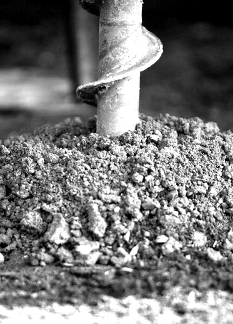ANSTO aids cheap carbonation
 New mineral-recovery techniques could make some low-grade mines more viable.
New mineral-recovery techniques could make some low-grade mines more viable.
Researchers at the Australian Nuclear Science and Technology Organisation (ANSTO) are working on new approaches using existing low cost and low energy technologies to accelerate ‘carbonation’.
Carbonation involves chemical reactions of carbon dioxide, and is used to create a range of potentially useful materials.
Although passive carbonation of mine tailings occurs naturally, the equivalent of approximately 30 years of passive carbonation was achieved within four weeks in one ANSTO’s experiments.
The processes could be used to reduce, reuse and recycle mining waste into more valuable substances.
“If you can integrate carbon capture with recovery of previously inaccessible minerals, say of nickel and cobalt, you could make some lower grade mines more viable,” says lead author Dr Jessica Hamilton.
“If we irrigate the mineral waste from mines with acid, the minerals dissolve to produce a solution that is rich in magnesium and calcium, which, in turn, react with CO2 and form solid carbonate minerals.”
Currently, about 419 million tonnes of ultramafic and mafic (rich in magnesium and calcium) waste is produced each year. If this matter was fully carbonated, it would lock up 175 million tonnes of atmospheric CO2 per year.
Dr Hamilton is working on two techniques - one involving a direct reaction of partially saturated tailings with mining flue gas, and a second that employs ‘heap leaching’ treatment.
The heap leaching produced a liquid high in magnesium, capable of sequestering an amount of carbon dioxide 200 times greater than the passive carbonation that occurred at the derelict asbestos mine where sample were obtained.
“The choice of approach depends on the resources available at the mine and the local mineralogy,” said Dr Hamilton.
“If there is waste acid available and you don’t have much active brucite, then heap leaching is a great option. If there is a CO2 source, and you have brucite, then you might go for direct reaction with that gas. But the two can also be used together, for example heap leaching can be followed by reaction of the magnesium rich fluids with a CO2 source.”
An added benefit is that for mines or mineral processing that produces acid as a by-product, this acid can be used and neutralised.
The approach is suitable for waste from platinum, chromite, diamond, and some nickel, copper, and historical chrysotile mines.
A testing program is now underway to scale up carbon mineralisation technology at diamond mines in Africa and Canada.








 Print
Print